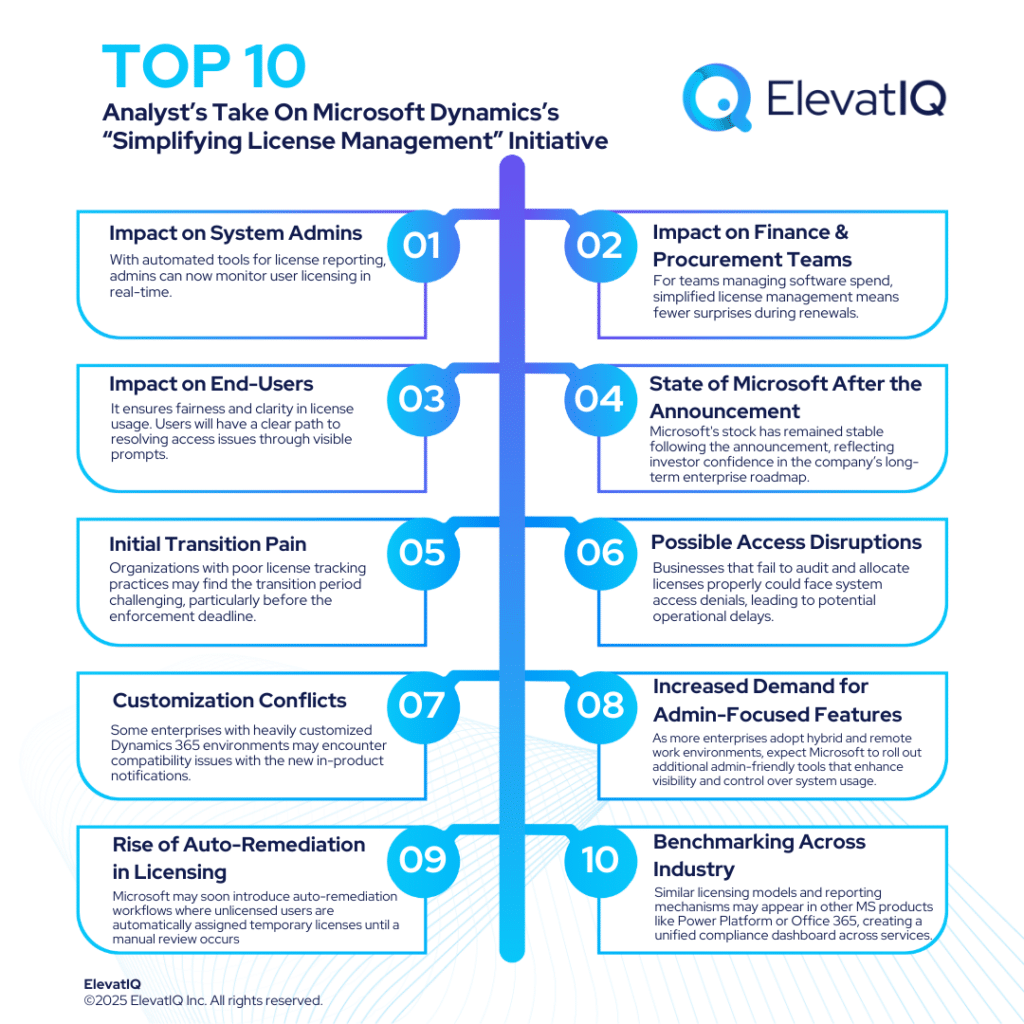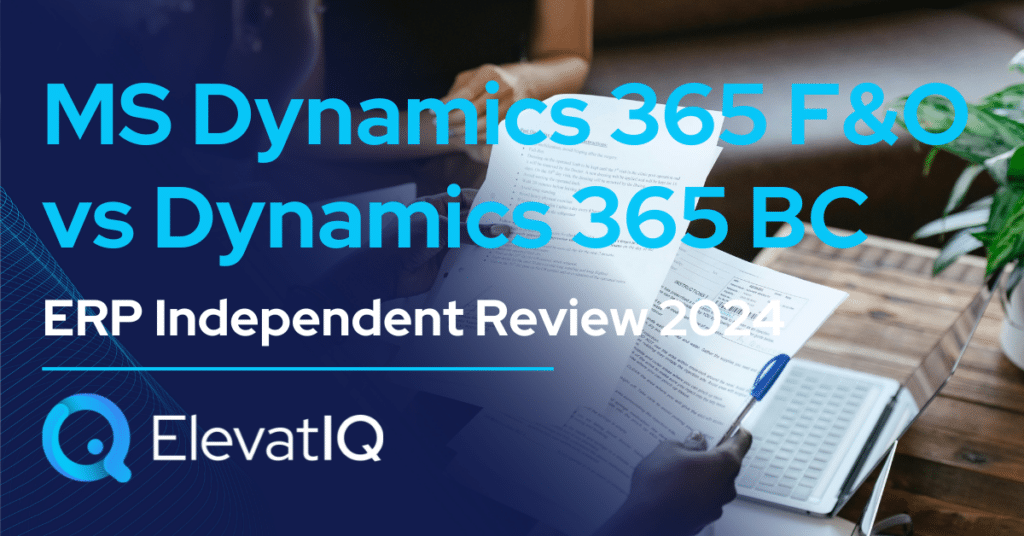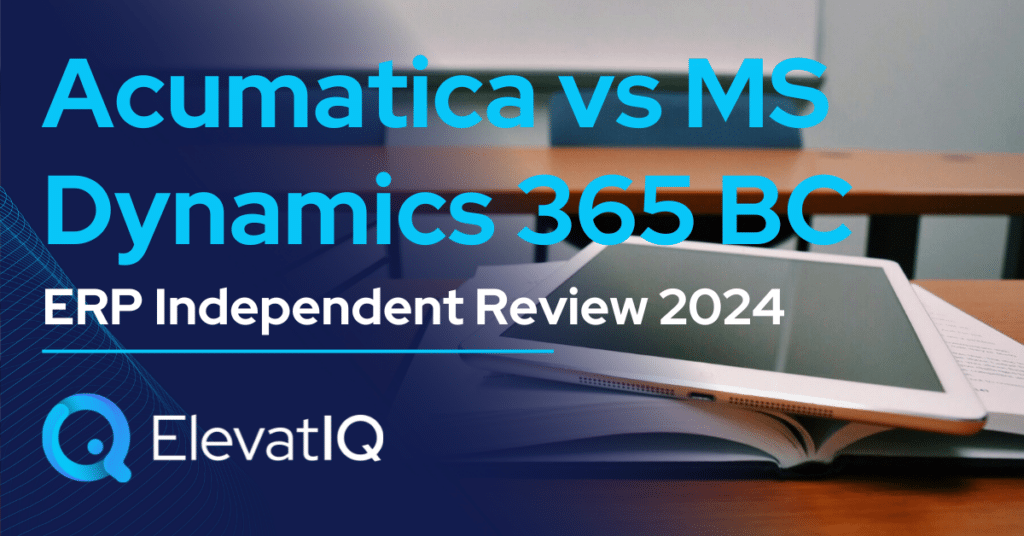Breaking Down the News: What’s Changing in Dynamics 365
Introduction of License Usage Reporting
Starting April 30, 2025, administrators using Dynamics 365 Finance and Operations will have access to a new license usage reporting feature. The team designed this tool to provide detailed insights into available, assigned, and unassigned user licenses within the organization.
Previously, many system admins had to rely on third-party tools or manual logs to manage license distribution, leading to inefficiencies and errors. With this native feature, Microsoft takes a direct step toward simplified license management, helping teams allocate resources more effectively and avoid unnecessary overhead.
In-Product Notifications for Unlicensed Users
Another update launching simultaneously on April 30 includes in-product messaging that notifies users if they are accessing the application without a proper license. These alerts will guide unlicensed users to reach out to their system administrators to resolve access issues.
This proactive measure not only minimizes unintentional license breaches but also encourages a culture of transparency and compliance. According to Microsoft, this feature is part of their commitment to “drive responsibility and reduce licensing-related friction between users and administrators.”

License Enforcement Coming August 30, 2025
Perhaps the most notable shift in policy is set to take place on August 30, 2025, when Microsoft will begin enforcing license assignments more strictly. Users attempting to access Dynamics 365 without a valid license will be blocked entirely from entering the platform.
This move signals Microsoft’s commitment to simplified license management while also reinforcing software licensing compliance. Organizations will be required to ensure that each user has an appropriate license in place or face immediate access disruption. AI solutions, ServiceNow ensures businesses can adopt AI automation with minimal configuration.
Why This Matters: Strategic Context Behind the Update
This update is not just a technical enhancement, it’s a strategic realignment. Microsoft is increasingly leaning into tools that offer simplified license management, reflecting a broader industry trend toward software asset optimization and automation.
As organizations grow, so does the complexity of managing user access, especially in large-scale enterprise environments. By simplifying visibility into license consumption and automating enforcement, Microsoft is addressing a long-standing pain point among IT leaders.

Implementation Timeline
To avoid business disruption, Microsoft is rolling out the changes in a phased manner:
- April 30, 2025 – Launch of license usage reporting and in-product notifications.
- August 30, 2025 – Enforcement of license compliance; unlicensed users will be denied access.
This staged approach gives organizations time to adapt, audit their current license allocations, and implement any necessary changes.
Analysts’ Take: Stakeholder Impact, Future Predictions & Unique Insights
Impact on Stakeholders
End Users: While the upcoming enforcement might be disruptive initially, it also ensures fairness and clarity in license usage. Users will have a clear path to resolving access issues through visible prompts.
System Administrators: The new features bring welcome relief. With automated tools for license reporting, admins can now monitor user licensing in real-time. This move supports smoother audits and reduces dependency on manual spreadsheets and guesswork.
Finance & Procurement Teams: For teams managing software spend, simplified license management means fewer surprises during renewals. Clear data on underused or over-assigned licenses will help optimize costs.
State of Microsoft After the Announcement
Microsoft‘s stock has remained stable following the announcement, reflecting investor confidence in the company’s long-term enterprise roadmap. The move is seen as a part of a broader push toward automation and operational intelligence across Microsoft’s cloud services, reinforcing its position as a dominant player in enterprise SaaS. By building features like simplified license management directly into its platform, Microsoft is setting a precedent for competitors and showing a commitment to continuous improvement.
Potential Challenges Ahead
Despite its promise, the new policy could face some hurdles:
- Initial Transition Pain: Organizations with poor license tracking practices may find the transition period challenging, particularly before the enforcement deadline.
- Access Disruptions: Businesses that fail to audit and allocate licenses properly could face system access denials, leading to potential operational delays.
- Customization Conflicts: Some enterprises with heavily customized Dynamics 365 environments may encounter compatibility issues with the new in-product notifications.
Future Outlook & Unique Predictions
- Increased Demand for Admin-Focused Features: As more enterprises adopt hybrid and remote work environments, expect Microsoft to roll out additional admin-friendly tools that enhance visibility and control over system usage.
- Rise of Auto-Remediation in Licensing: Microsoft may soon introduce auto-remediation workflows where unlicensed users are automatically assigned temporary licenses until a manual review occurs—aligning with the goal of simplified license management without access loss.
- Benchmarking Across Industry: It wouldn’t be surprising if similar licensing models and reporting mechanisms appear in other Microsoft products like Power Platform or Office 365, creating a unified compliance dashboard across services.










